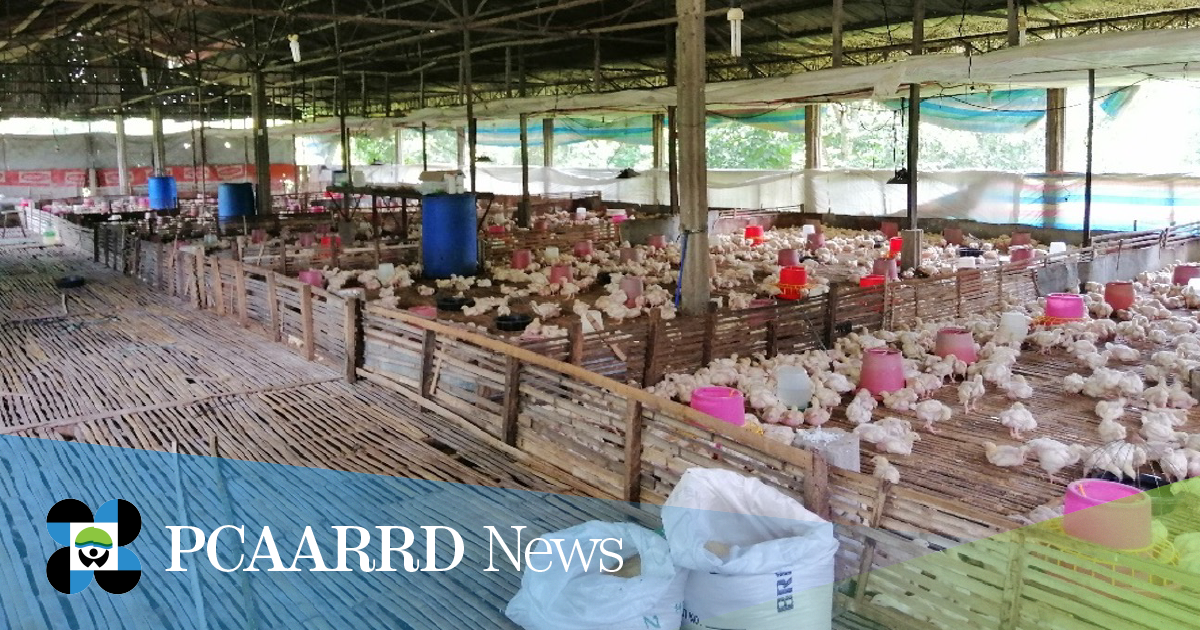A project conducted by Cavite State University (CvSU) researchers has generated data on antimicrobial resistance (AMR) of broiler chicken with avian pathogenic Escherichia coli (APEC) and Salmonella enterica on antibiotics such as amoxicillin, ciprofloxacin, doxycycline, kanamycin, cephalothin, amikacin, trimethoprim-sulfamethoxazole, and tetracycline.
AMR occurs when antibiotics are misused, overused, or used as a growth promoter in broiler chicken farms. Unfortunately, chicken farmers in the Southeast Asian region commonly misuse and overuse antibiotics, according to a study by Zellweger et al. in 2017. The repercussion of AMR is the transmission of foodborne pathogens from contaminated poultry products to humans. These pathogens are APEC and S. enterica, which cause extra-intestinal infections, gastroenteritis, and even death when humans consume contaminated poultry products.
According to Dr. Ma. Cynthia Rundina-Dela Cruz, project leader from CvSU and lead author of the study, “Antibiotic Sensitivity Profile and Dominant Antibiotic Resistance Genes in Selected Avian Bacterial Pathogens from Commercial Poultry Farms in Upland Cavite,” data on AMR genes in APEC and S. enterica can help lay down measures for interventions and eventually mitigate the problem and sustain poultry production in the country. Data on this, which can also determine the scope of AMR in the country, is currently scarce, thus proving the value of the study.
APEC and S. enterica prevalence and AMR in upland Cavite
Researchers of the study found that the highest APEC prevalence was found in Tambo Malaki, Indang, Cavite at 25.64% while S. enterica prevalence was seen in Litlit, Silang, Cavite at 58.85%. In Tambo Malaki, there was a record of using trimethoprim-sulfamethoxazole (TMPS), which is traditionally used to treat Salmonellosis.
Isolates of poultry infected with S. enterica showed resistance to eight antibiotics: azithromycin (53.8%), cephalotin (40%), TMPS (40%), tetracycline (23%), amoxicillin-clavulanic acid (23%), and 15.3% each for ciprofloxacin, doxycycline, and kanamycin. These results indicate that the farms where the isolates were collected indiscriminately used colistin and TMPS in treating their poultry. According to Dr. Rundina-Dela Cruz, colistin was classified by the World Health Organization (WHO) as a last resort antibiotic; however, use of this antibiotic is prevalent in the farms included in the study.
Dr. Rundina-Dela Cruz observed that biosecurity protocols were not strictly employed. Specifically, shower facilities, vehicle bath, and installed perimeter fence were not present in the farms studied. Other animals including dogs, cats, birds, and goats, which can be carriers of pathogens, were also observed in the farms. Moreover, none of the farms studied did not have resident veterinarians, who could have suggested judicious use of antibiotics to the poultry raisers.
To counter AMR in poultry production, the study recommended that poultry raisers, farm workers, agrivet supply owners, veterinarians, and the public use antibiotics judiciously. Moreover, it highlighted the importance of resident veterinarians in farms.
The study, “Antibiotic Sensitivity Profile and Dominant Antibiotic Resistance Genes in Selected Avian Bacterial Pathogens from Commercial Poultry Farms in Upland Cavite,” is an entry under the Research Category and will be presented during the National Symposium on Agriculture, Aquatic and Natural Resources Research and Development (NSAARRD) that will be held on October 2, 2024. Winners of the award will be conferred during the DOST-PCAARRD’s 2024 S&T Awards and Recognition ceremony in November 2024.
NSAARRD, annually spearheaded by DOST-PCAARRD, recognizes outstanding contributions to the agriculture, aquatic, and natural resources sector in the country.

